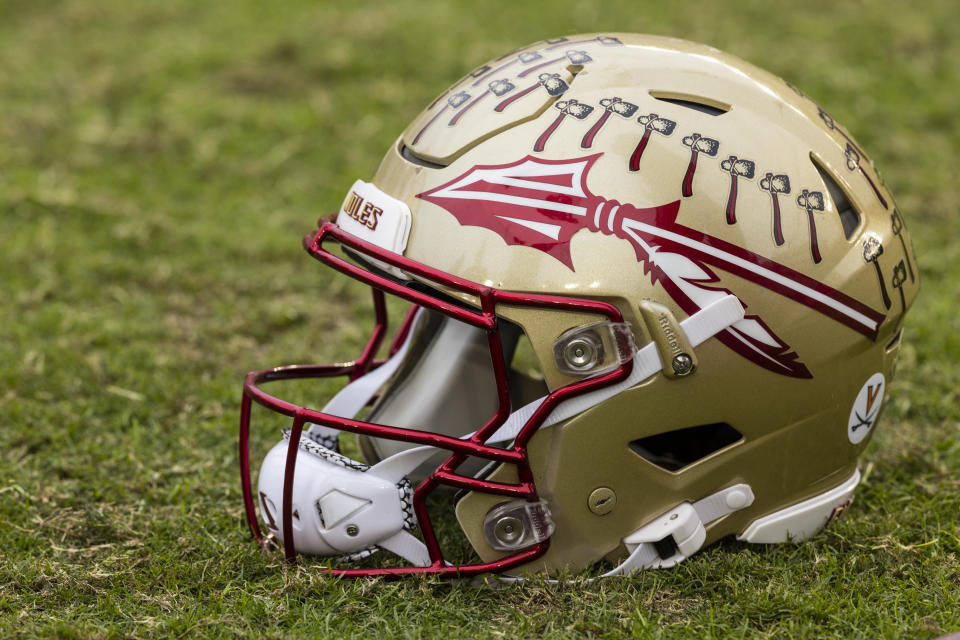Florida State has called a Board of Trustees meeting for Friday which could produce a legal filing that could start the process of challenging the ACC’s grant of rights and could lead to the Seminoles getting out of the conference which could cause the league to splinter altogether.
That’s a lot of “coulds.”
Then again, this is conference realignment — aka the endless chase for television revenue — which has produced unthinkable developments such as the breakup of the 108-year-old Pac-12, Cal and Stanford playing in the Atlantic Coast Conference and various Rutgers-UCLA matchups to come.
A lot can happen.
FSU desperately wants out of the ACC and its 20-year contract with ESPN, which pays out in the low $30 millions, per school, annually. The deal was supposed to bring stability but the SEC and Big Ten have since expanded and gotten far richer media rights packages. It’s expected that schools in those leagues will make upwards of twice as much as the Seminoles (and the rest of the ACC members) going forward.
For FSU, that is unappealing, if not unsustainable.
The question for Florida State is what if this works? What if they are the proverbial dog that catches the car? Then what?
There is no clear-cut landing place, but there is plenty of talk among SEC and Big Ten administrators that despite Florida State football’s storied past and present strength, FSU wouldn’t be a serious candidate for expansion. Same for Clemson even with its recent national titles.

On a competitive level, it doesn’t make sense, but the repeated conventional wisdom is that if ACC schools were available for poaching then North Carolina and Virginia might be the first choices. Academics, demographics and the ability to extend a league’s footprint into new territory would win out.
That’s what they say at least.
For now.
“Everything changes if schools are truly available,” one Big Ten source said. “Despite what is said, there has been no reason to examine all of this, so [it’s] hard to know.”
The SEC is believed to be a less likely option for Florida State, Clemson or Miami — the three most desirable football properties (and this is about football mostly). The league is set to begin as a 16-team operation next season existing in contiguous states. It is already powerful. It is already rich. It has now taken over large swaths of Texas.
The SEC’s goal is to play a level of football that appeals to a national audience. It also already has schools in Florida (the University of Florida) and South Carolina (the University of South Carolina).
“My sense is there is more opposition than interest,” one SEC source said.
Any move on FSU and/or the others would be defensive, mainly to block the Big Ten from gaining a foothold in the region.
The Big Ten might be different. It is aggressively snapping up television draws and doesn’t care whether it makes any geographic, cultural or traditional sense. It begins as an 18-team entity next season with a four-school West Coast wing — USC, UCLA, Oregon and Washington.
The importance of the Big Ten Network getting basic cable subscriptions still matters, even as cord cutting has limited those numbers.
Adding exciting football matchups would no doubt appeal to Fox, which is its main television partner, let alone CBS and NBC. FSU, Clemson and Miami all bring that before UNC and UVA. Or maybe North Carolina jumps in with the first three schools.
This embedded content is not available in your region.
An ACC breakup could also force Notre Dame, the most coveted television property, to, if not come aboard full-time, at least set up some kind of scheduling agreement with the Big Ten like it currently has with the ACC.
The Big Ten likes to speak of its academics and bloviate about its grandeur — it once named its divisions “Leaders” and “Legends” after all. Its actions are about money, though.
In 2014, it added Rutgers and Maryland for almost no reason other than new cable subscriptions. In 2022, it expanded to Los Angeles to add a huge television market but initially chose to pass over Oregon and Washington. A year later, as the Pac-12 faltered, the league quickly reversed course when TV networks expressed the need for better inventory and thus better teams (i.e. the Ducks and Huskies).
And last summer, while the Big Ten’s Council of Presidents and Chancellors discussed expanding to 20 teams and bringing in Stanford and Cal — both incredibly appealing academic institutions in a huge, wealthy market — that eventually was snuffed out by TV/football interests.
“Florida State would appeal to television and get us into the state of Florida; there is something there,” said a separate Big Ten source.
Then there is the Big 12, which would gladly snap up just about any and every ACC school it could to build a massive, nation-wide operation.
Big 12 commissioner Brett Yormark has even focused on basketball, which he views as undervalued. A Big 12 with basketball powers that include Arizona, Kansas, Baylor, UNC, Duke, Virginia, Louisville and so on would easily be the best in the country.
Every turn of conference realignment brings something unexpected.
Florida State is firing the first salvo this time, and the ramifications are massive for the future of college athletics.
It appears willing to barrel into the future with no known destination, no safe harbor beckoning them.
That can change, though. Everything always does.
Services Marketplace – Listings, Bookings & Reviews









